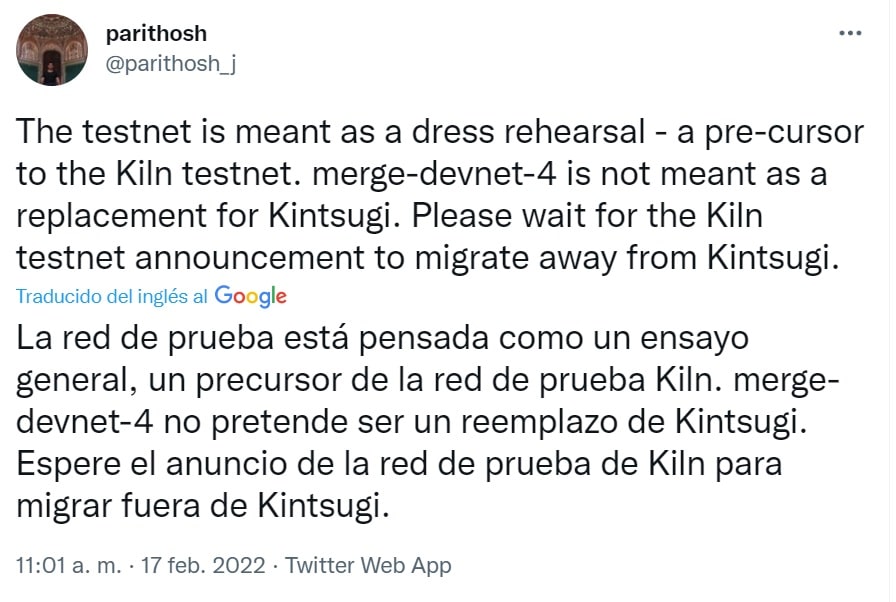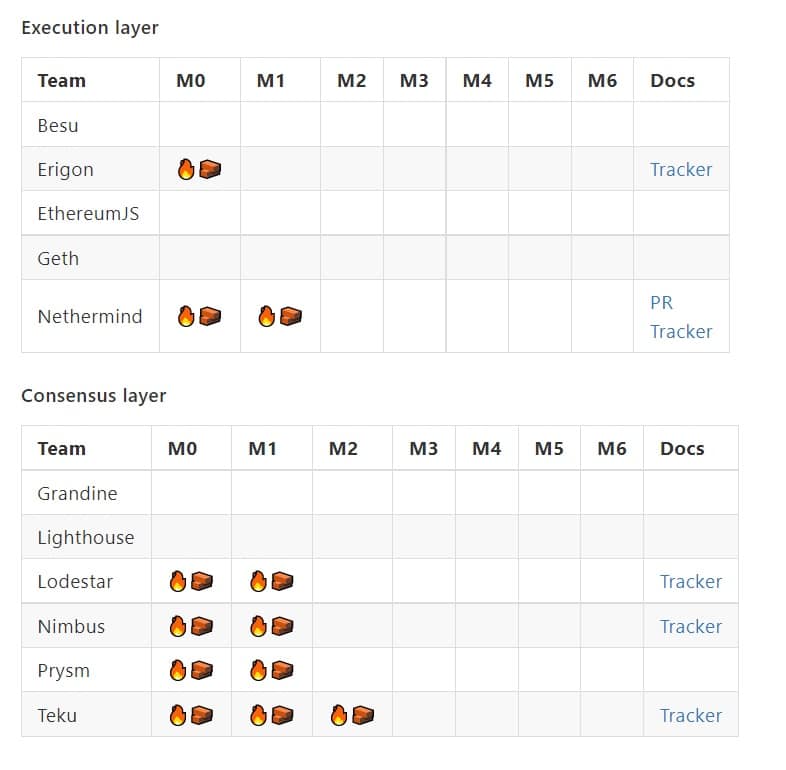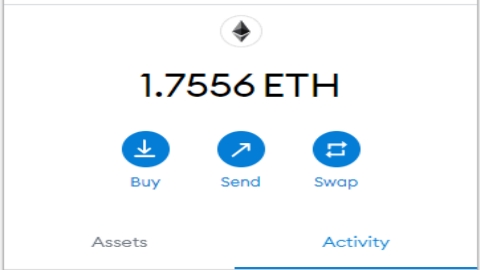With the arrival of Ethereum 2.0, the blockchain will undergo one of the most important transformations of its existence. At that point, it will go from working through proof of work or mining to working through validators and proof of stake. Both methods coexist in the Kiln test network, whose preliminary tests began on February 17.
However, it is not yet active. Instead, currently undergoing a testing period on the merge-devnet-4 network, as developer Parithosh Jayanthi explains in the publication from Twitter quoted below.
Kintsugi, the Ethereum 2.0 testnet launched late last year, has had a few technical issues. Although Jayanthi mentioned in his post that the testnet ended with no downtime and no intervention, Kiln seems to be aiming to fix the flaws of his predecessor.

However, Jayanthi mentions in his tweet that merge-devnet-4 “is not a replacement for Kintsugi” and that developers should not migrate their tests to Kiln until instructed to do so. No date was specified when the final version of the testnet would be available.
What news does Kiln bring?
The main difference between Kintsugi and Kiln is that the latter It will allow the consensus algorithms of Ethereum and Ethereum 2.0 to coexist. That is, it will combine proof of work (PoW) with proof of stake (PoS).
So he did and showed on Twitter Adrian Sutton, blockchain protocol engineer at the Consensys company. In his post, he demonstrated how he ran the Geth client of the current version of Ethereum together with Teku, validator of Ethereum 2.0, in merge-devnet-4.
According to a publication from developer Tim Beiko on ethereum.org, the new Kiln testnet will incorporate the latest specific changes expected for TheMerge. This will be the phase in which the old chain will finally be joined with the new one, today made up of only a fragment called Beacon Chain. During The Merge or “the merger”, PoW and PoS will coexist, until Ethereum 2.0 is finally reached and mining in this network is thus abandoned.
The text details that, as with Kintsugi, it is expected to test some “short-lived” development networks or devnets before launching a more permanent testnet for developers. The aforementioned merge-devnet-4 is one of them.

Ethereum 2.0. Source: notes.ethereum.org.
Likewise, the cited publication has a table that specifies the stages in which each Ethereum and Ethereum 2.0 client is in this testing phase. This can be seen in the graph below.
Kintsugi, the “young” Ethereum testnet
The term Kintsugi refers to a Japanese word used to describe the art of repairing objects with ceramics. In the context of Ethereum, its main purpose is to provide a secure environment in which developers and users can get to know and learn to use the new network, Ethereum 2.0 or consensus layer.
At the time of its launch in late December 2021, Kintsugi had approximately 2.3 million test ethers (ETH) deposited on its network and more than 72,000 validators. ETH tests are “fake” tokens that are generated for the purpose of testing these testnets but are not on the mainnet. They are obtained in faucets (“faucets”) free of charge.
In January 2022, CriptoNoticias had reported on an error in this test network that led to its division into three different networks. That led to at least three days without being able to validate new blocks. This could also have been one of the causes that led to the development of a new testnet, although this has not been confirmed by the developers.
Specifically, what had happened with Kintsugi is that certain validators could not identify bad blocks created specifically to test them. Since other validators using the Geth client did reject them, a new chain was created.
With all this, the next step is to wait for the final release of Kiln, the new testnet, to migrate to it. In this way, Ethereum 2.0 will have a new test platform to find its way to the long-awaited merger.
